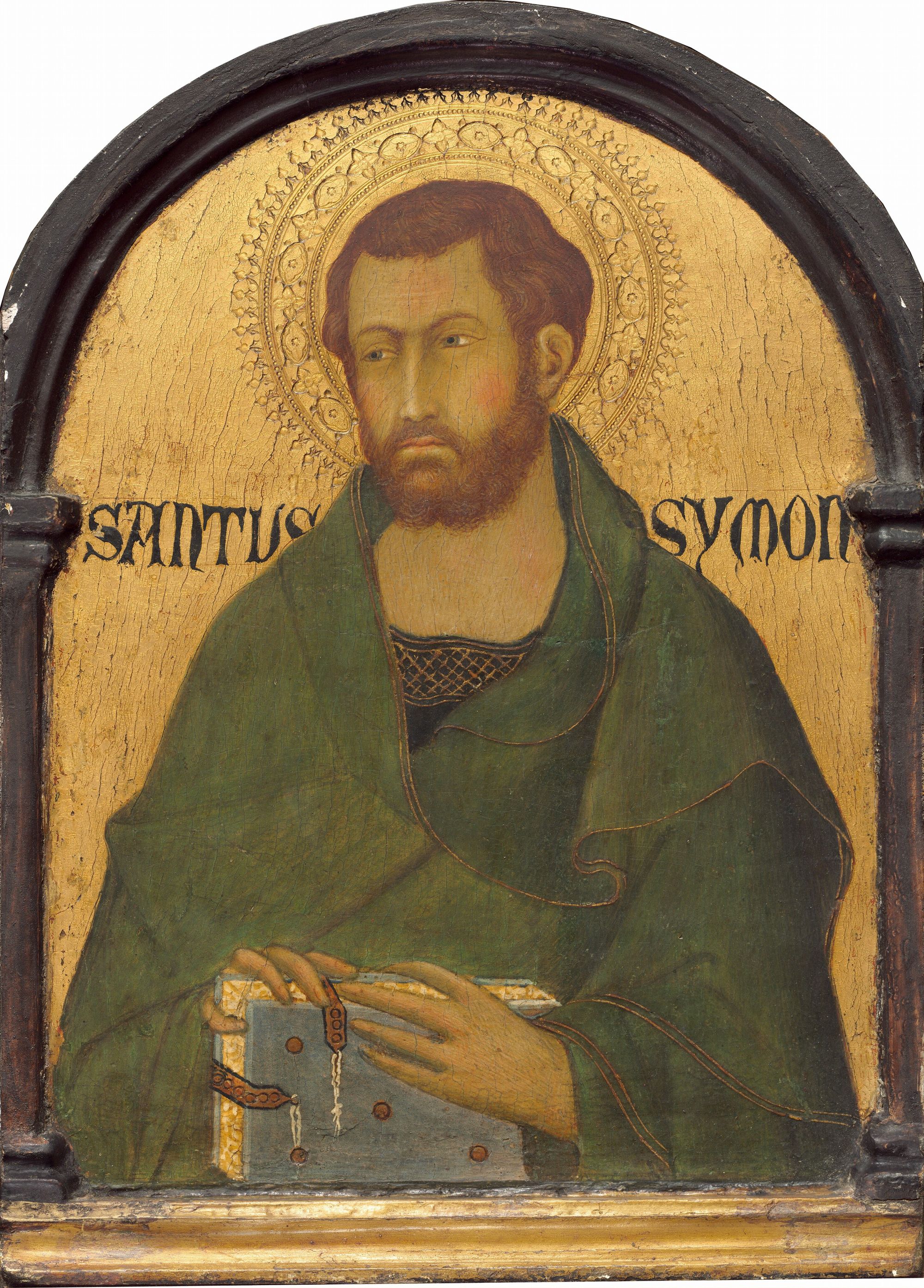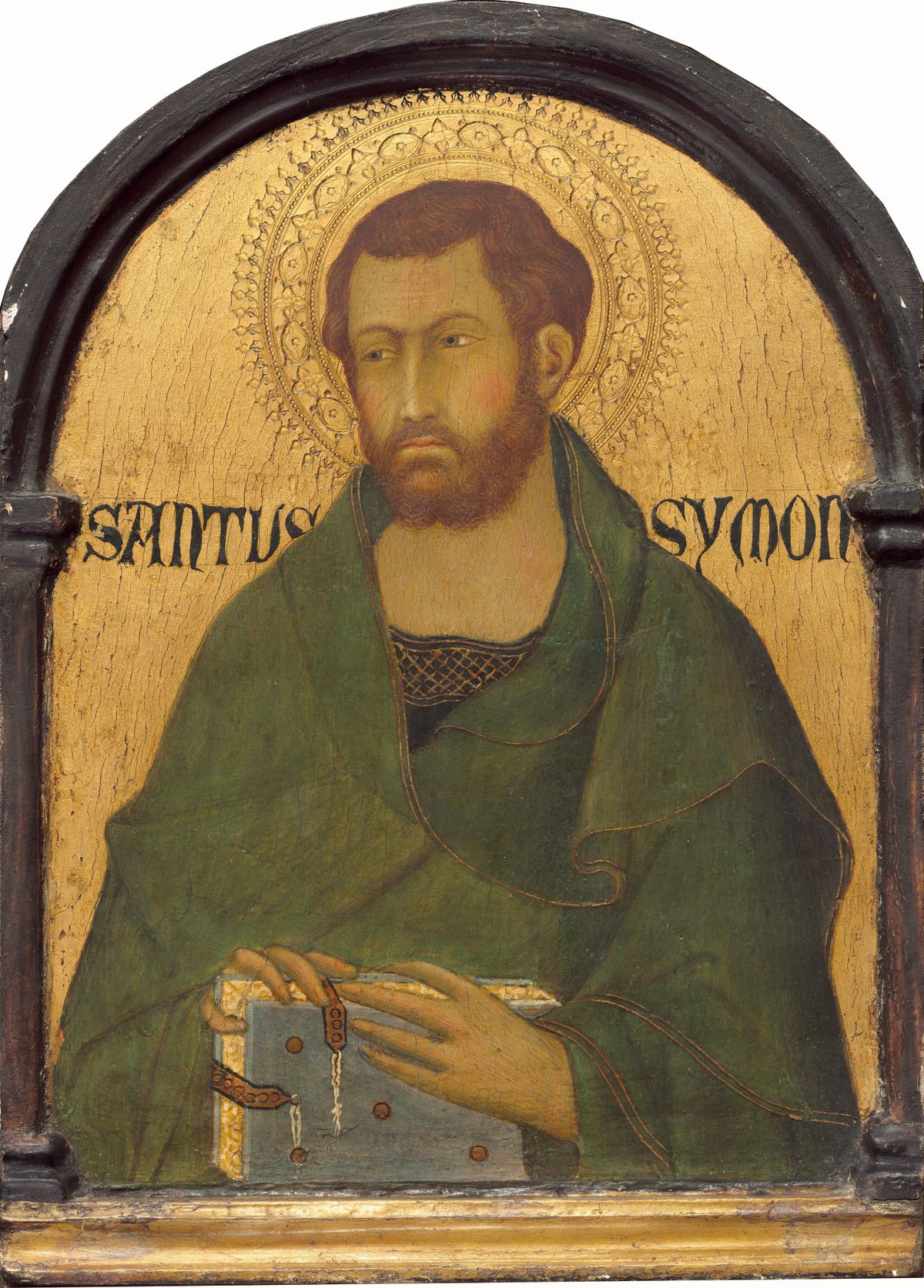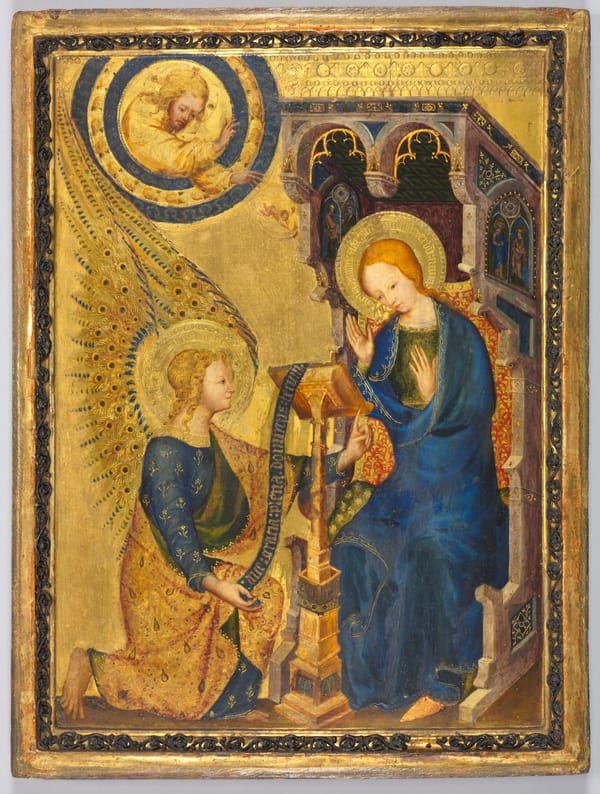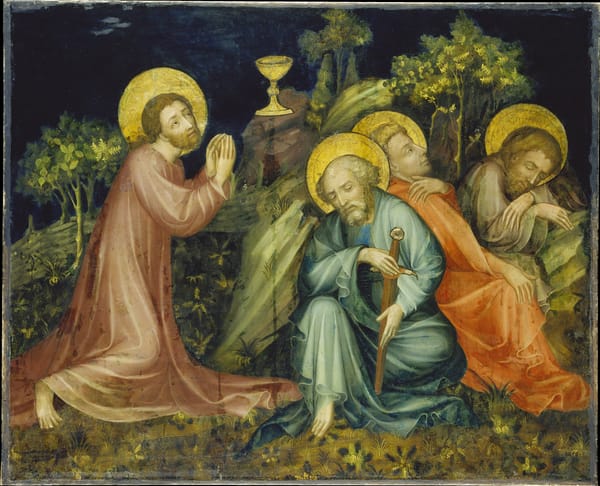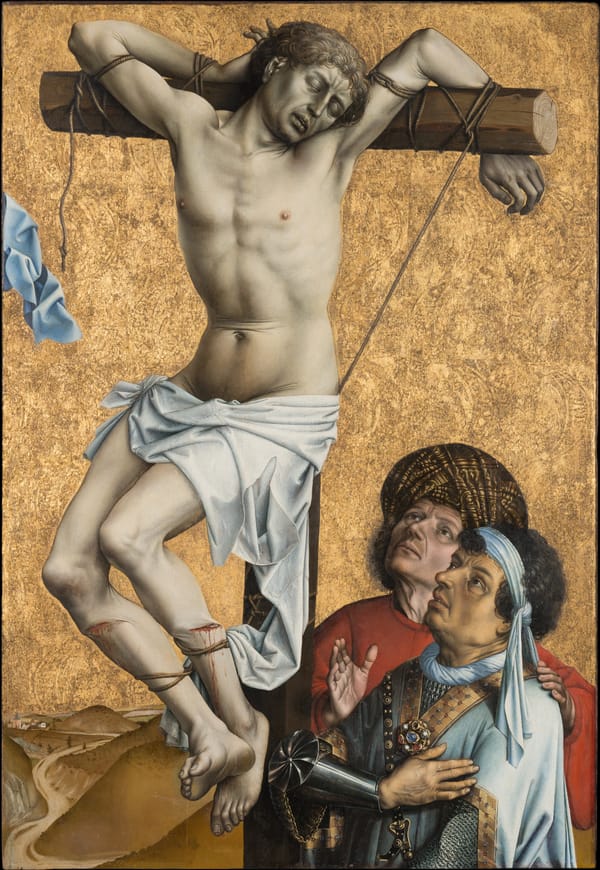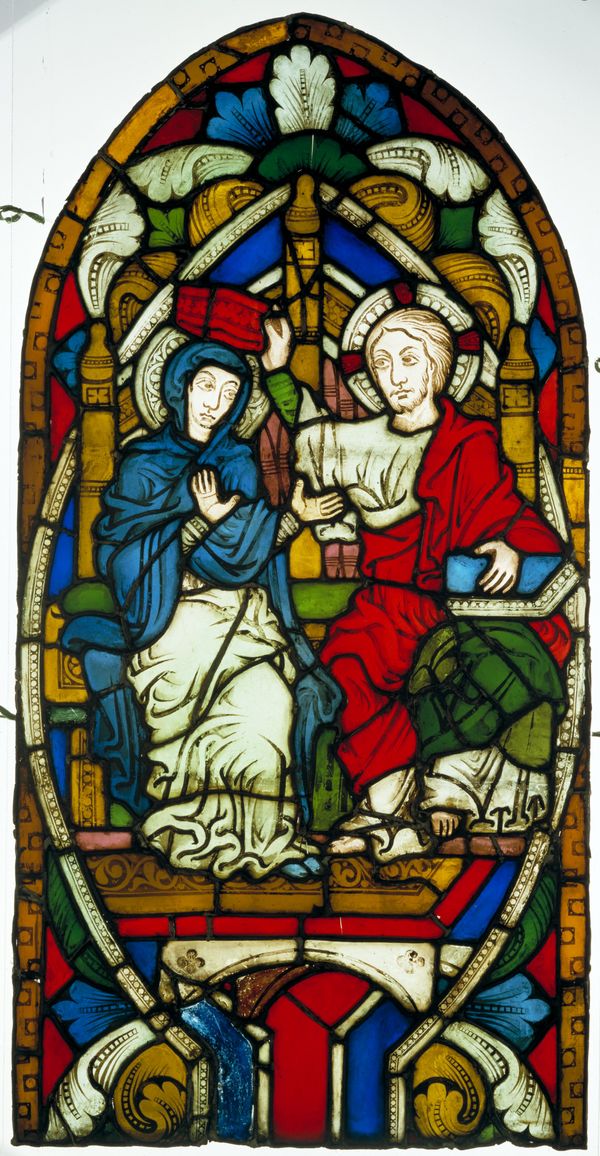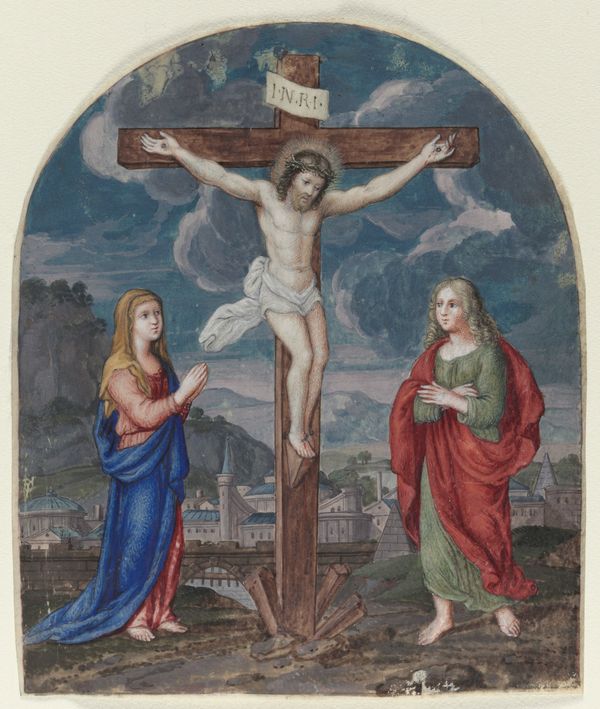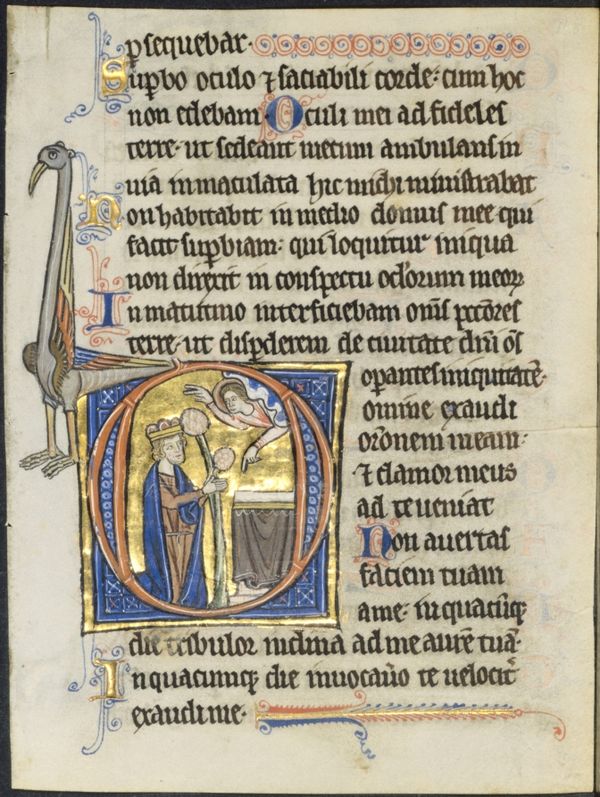Simon “the Zealot” is one of Jesus’s apostles in the first three Gospels (Matthew, Mark, and Luke), but otherwise Simon is an elusive figure. Legend says that he was martyred by being sawn apart, but there is no saw to indicate his martyrdom in this half-length portrait. This panel once decorated the predella of an altarpiece along with nine other small portraits of apostles, three of which are in the collection of the National Gallery of Art: Saint Matthew, Saint James Major, and Saint Judas Thaddeus.
The array of 10 apostle portraits was already a bit old-fashioned when Simone painted the altarpiece and helps to determine the painting’s date, around 1320. After that time, such predellas were more typically decorated with a series of narrative scenes from the life of Jesus, the Virgin Mary, or a saint. In addition, it is believed that this is the last time Simone employed rounded arches, choosing the more “modern” pointed Gothic arch for his later altarpieces.
Simone Martini (Sienese, active from 1315; died 1344) was probably a student of the great Sienese master Duccio di Buoninsegna (Sienese, c. 1250/1255 - 1318/1319). While retaining the older artist’s delight in pattern and decorative effect, the younger painter adopted a softer, more lyrical style. Its elegance and refinement drew praise from Petrarch, whom Simone met while working for the pope in Avignon (seat of the papacy 1309–1378), and for whom he painted a portrait of the poet’s beloved Laura.
Free Downloads Below
Hi-Res
1200px
800px
